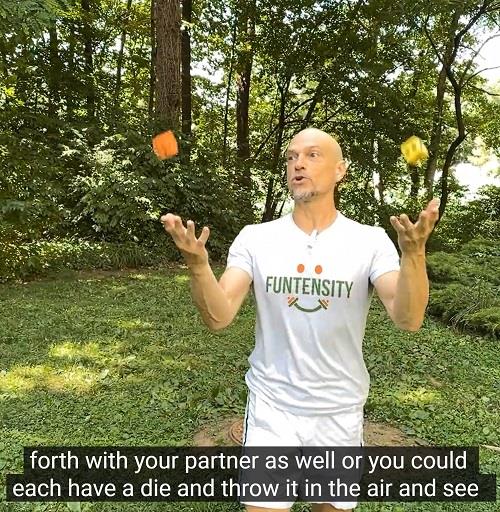Never “just” walk again. Walking is good. Make it better for brain health. Here are some ideas for how to make walking more fun and enjoyable.
Walking is boring 🙄 (according to many people.) We know even something as gentle as going for a walk has mental and physical health benefits.
I suppose our devices have made us require constant stimulation and ceaseless entertainment.
For anyone needing a little more excitement to your walking or if you want to enhance the brain health benefits of walking, try the “enhanced walking” strategies in the video below. Just get up and move in fun ways.
Here’s a brief research roundup before the “show” starts. If you prefer, scroll down to skip to the video.
- Being physically active reduces the risk of all-cause mortality with the largest benefit in going from no activity to low levels of physical activity. (Woodcock, 2011)
- Specific to brain health however, data from the Framingham Heart Study shows that each additional hour spent in light-intensity physical activity is associated with larger brain volume, equivalent to approximately 1.1 years less brain aging. Achieving 10,000 or more steps per day is associated with higher brain volume compared with those achieving fewer than 5,000 steps per day. (Spartano, 2019)
- Further, light physical activity (like walking) apart from exercise itself shows brain health benefits. In a study of people ages 60-78 who wore accelerometers to measure physical activity, those who engaged more often in light physical activity had greater structural integrity in the white matter of the temporal lobes, which play a key role in memory, language, and the processing of visual and auditory information. More sedentary people showed lower white matter structural integrity in the hippocampus. (Burzynska, 2014)
A little goes a long way…and when you enhance walking by tossing or catching objects, you boost the brain health benefits and sense of enjoyment you derive from it. Watch the short video below for some fun ideas to try on your next walk either alone or with a walking partner.
References
Burzynska AZ, Chaddock-Heyman L, Voss MW, Wong CN, Gothe NP, Olson EA, et al. (2014) Physical Activity and Cardiorespiratory Fitness Are Beneficial for White Matter in Low-Fit Older Adults. PLoS ONE 9(9): e107413. https://doi.org/10.1371/journal.pone.0107413
Spartano, N., et al., (2019) Association of Accelerometer-Measured Light-Intensity Physical Activity with Brain Volume: The Framingham Heart Study. JAMA Network Open 2(4), e192745. https://jamanetwork.com/journals/jamanetworkopen/fullarticle/2730790 Woodcock, J., Franco, O. H., Orsini, N., & Roberts, I. (2011). Non-vigorous physical activity and all-cause mortality: systematic review and meta-analysis of cohort studies. International Journal of Epidemiology, 40(1), 121–138. https://doi.org/10.1093/ije/dyq104

